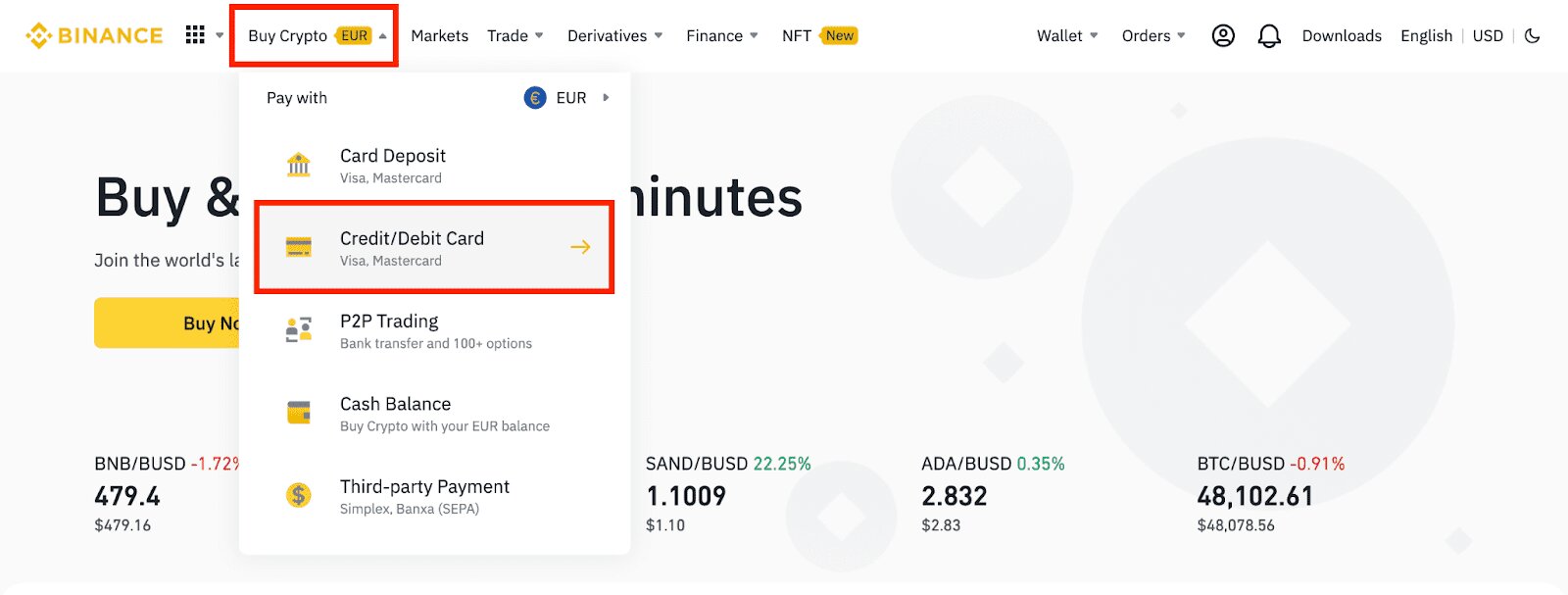Introduction
Welcome to the world of cryptocurrencies, where digital assets are stored and managed using crypto wallets. As the popularity of cryptocurrencies continues to rise, the importance of secure and reliable wallet solutions cannot be overstated. However, just like any other business, crypto wallet providers can face challenging situations that may lead to their closure. In this article, we will explore the potential consequences and risks that arise when a crypto wallet goes out of business.
Crypto wallets, also known as digital wallets, are software applications that allow users to store, send, and receive their cryptocurrencies. These wallets provide users with a unique combination of public and private keys, which are essential for securing and accessing their funds. With the rapid growth of the crypto market, a wide range of wallets have emerged, offering various features and levels of security.
Unfortunately, not all crypto wallet providers can withstand the ever-evolving nature of the industry. Just as with any business, there are several factors that can contribute to the downfall of a crypto wallet provider. These factors may include mismanagement, lack of profitability, regulatory challenges, security breaches, or even fraud. When a crypto wallet provider goes out of business, it can have significant implications for its users.
In the following sections, we will explore the potential risks associated with a crypto wallet going out of business, and we will discuss the steps users can take to mitigate these risks. It is important to note that these risks and steps may vary depending on the specific circumstances and the type of wallet provider. However, by understanding these potential consequences and being prepared, users can navigate through any challenges that may arise if their chosen crypto wallet provider goes out of business.
What is a Crypto Wallet?
A crypto wallet, also known as a digital wallet, is a software application that allows individuals to store, manage, and interact with their cryptocurrencies. It serves as the interface between users and the blockchain network, enabling them to send, receive, and monitor their digital assets securely. Think of it as a digital equivalent to a physical wallet, but instead of holding physical cash and cards, it stores digital currencies and cryptographic keys.
A crypto wallet generates a pair of cryptographic keys – a public key and a private key. The public key functions as the wallet’s address, which users share with others to receive funds. The private key, on the other hand, serves as the password to access and control the wallet. With this pair of keys, users can securely store their cryptocurrencies and initiate transactions.
There are different types of crypto wallets available, each with its own features, security levels, and accessibility options. Some common types include:
- Software Wallets: These wallets are software applications that are installed on a computer, smartphone, or tablet. They can be further categorized into:
- Desktop Wallets: Installed on a user’s computer, these wallets provide control and security but require regular software updates.
- Mobile Wallets: Designed for smartphones, these wallets offer convenience and portability, allowing users to manage their cryptocurrencies on the go.
- Web Wallets: Accessible through web browsers, these wallets allow users to manage their cryptocurrencies via an online platform. They may be provided by exchange platforms or independent wallet providers.
- Hardware Wallets: These wallets are physical devices that store users’ private keys offline. They are considered one of the most secure options as they are isolated from internet-connected devices.
- Paper Wallets: A paper wallet is a physical printout of a user’s public and private keys. It is a cold storage solution that provides offline security.
Regardless of the type of wallet, securing the private key is of utmost importance. If a user loses the private key or it gets compromised, they may lose access to their funds permanently. Therefore, it is essential to protect the private key through secure storage methods, such as encryption or utilizing offline storage solutions.
Now that we have a basic understanding of what a crypto wallet is, let’s explore the potential risks and challenges users may face if their chosen wallet provider goes out of business.
Why Do Crypto Wallets Go Out of Business?
Running a crypto wallet business comes with its own set of challenges, and unfortunately, not all wallet providers are able to sustain their operations in the long run. Several factors can contribute to the downfall of a crypto wallet provider. Let’s explore some of the common reasons why crypto wallets may go out of business:
- Mismanagement: Just like any other business, poor management or misaligned strategies can lead to financial difficulties. Inefficient use of resources, lack of foresight in product development, or inability to adapt to market changes can all contribute to the downfall of a wallet provider.
- Lack of profitability: Wallet providers rely on revenue sources such as transaction fees or subscriptions to cover their operational costs and generate profits. If a wallet provider fails to attract a sufficient user base or establish sustainable revenue streams, it may struggle to sustain its business in the long term.
- Regulatory challenges: The cryptocurrency industry operates in a complex regulatory landscape that varies from country to country. Changes in regulations or unfavorable regulatory developments can affect the ability of wallet providers to operate legally or efficiently. Compliance with increasingly stringent regulations can be costly and time-consuming for smaller wallet providers, making it challenging for them to remain in business.
- Security breaches: Security is paramount in the cryptocurrency world, and any security vulnerabilities or breaches can severely impact a wallet provider’s reputation and user trust. If a wallet provider experiences a significant security incident, such as a hack or data breach, it can lead to financial losses and customer attrition, making it difficult for the provider to sustain its business.
- Fraud or scams: Unfortunately, the crypto industry has seen its fair share of fraudulent activities and scams. Some wallet providers may engage in malicious practices, such as stealing user funds or engaging in Ponzi schemes. When such dishonest practices are exposed, it can lead to legal action, significant reputational damage, and ultimately, the closure of the wallet provider.
Ultimately, the viability of a crypto wallet business depends on factors such as effective management, robust security measures, profitability, regulatory compliance, and maintaining a trustworthy reputation. However, even with these factors in place, unforeseen circumstances or market dynamics can still lead to the closure of a wallet provider. Understanding these potential risks and challenges can help users make informed decisions when selecting a crypto wallet provider.
Potential Risks of a Crypto Wallet Going Out of Business
When a crypto wallet provider goes out of business, it can have significant implications for its users. Here are some potential risks that users may face:
- Loss of Access to Funds: One of the most immediate risks is the loss of access to your cryptocurrencies stored in the wallet. If the wallet provider shuts down without providing a proper process for users to withdraw or transfer their funds, you could be at risk of losing your digital assets.
- Security Vulnerabilities: When a wallet provider goes out of business, they may no longer be actively maintaining or updating their wallet software. This can lead to security vulnerabilities that attackers could exploit to gain unauthorized access to your funds or personal information.
- Lack of Customer Support and Updates: An inactive or defunct wallet provider means there will no longer be customer support available to address inquiries or issues. Additionally, there will be no updates or bug fixes to address potential vulnerabilities or improve the wallet’s functionality.
- Loss of Transaction History and Data: If a wallet provider goes out of business, you may lose access to your transaction history and other important data related to your crypto holdings. This can make it difficult to track your past transactions, calculate gains or losses, or provide documentation for tax purposes.
- Liquidation Risks: In some cases, a crypto wallet provider may go bankrupt and be forced to liquidate their assets. In such situations, it is uncertain whether users will receive any compensation for the loss of their funds.
- Residual Privacy Risks: Even if a wallet provider shuts down, the personal information you provided during the registration process may still be stored in their databases. This poses residual privacy risks, as the data could potentially be exposed or mishandled by unauthorized parties.
It is important to note that the risks and consequences may vary depending on the specific circumstances and the type of wallet provider. However, by understanding these potential risks, users can take proactive measures to mitigate the impacts and protect their funds. In the next sections, we will discuss the steps users can take if their crypto wallet goes out of business.
Loss of Access to Funds
One of the most immediate and concerning risks of a crypto wallet going out of business is the potential loss of access to your funds. If a wallet provider shuts down without offering a clear process for users to withdraw or transfer their cryptocurrencies, it can be a distressing situation. Here are some steps you can take if you find yourself in this unfortunate scenario:
- Contact the Wallet Provider: Start by reaching out to the wallet provider through their customer support channels if they are still available. Inquire about the process for retrieving your funds or any alternative solutions they may offer. Keep records of all communication with the wallet provider for future reference.
- Check for Backup Options: Some crypto wallets provide users with a mnemonic phrase, also known as a recovery seed or backup phrase, during the initial setup. This phrase can be used to regain access to your funds even if the wallet provider is no longer operating. Check if you have this option and follow the wallet provider’s guidance to recover your funds using the backup phrase.
- Look for Community Support: Join online forums, cryptocurrency communities, or social media groups related to the specific wallet provider or the cryptocurrency you hold. Often, other users may have encountered similar situations and can provide guidance or insights on how to recover funds or access alternative wallet options.
- Seek Legal Advice: If you believe that your funds are at serious risk and no satisfactory solutions are provided, consult with a legal professional who specializes in cryptocurrency or financial law. They can guide you through potential legal remedies or actions that may help recover your funds or protect your interests.
- Be Wary of Scams: Unfortunately, scammers may try to take advantage of users in vulnerable situations. As you navigate the process of recovering your funds, be cautious of phishing attempts, fake wallet recovery services, or individuals offering unrealistic solutions for a fee. Always verify the legitimacy of any service or individual before sharing sensitive information or making payments.
It’s important to remember that the steps above may not guarantee a full recovery of your funds, as it ultimately depends on the specific circumstances and actions taken by the wallet provider. However, by being proactive, seeking support from the community, and exploring available options, you may increase your chances of recovering your funds or finding alternative wallet solutions.
To prevent such situations in the future, it is recommended to choose a reputable wallet provider with a proven track record of security and reliability. Regularly backup your wallet and mnemonic phrase, and keep them in secure offline storage. Additionally, consider diversifying your wallets by using multiple providers, ensuring that you have control and access to your funds even if one provider ceases its operations.
In the next section, we will discuss the steps you can take if your crypto wallet provider goes out of business to safeguard your funds and transition to a new wallet provider.
Security Vulnerabilities
When a crypto wallet provider goes out of business, it can lead to security vulnerabilities that could put your funds at risk. Without active maintenance and updates, the wallet software may become outdated, exposing it to potential risks and exploits. Here are some steps you can take to mitigate the security risks associated with a defunct wallet provider:
- Transfer Funds to a Secure Wallet: If you have access to your funds within the defunct wallet, it is advisable to transfer them to a more secure wallet or exchange platform as soon as possible. Choose a reputable wallet or exchange provider with a strong track record in security and ensure it has up-to-date security measures to protect your funds.
- Update Your Software: If you are using a desktop or mobile wallet application provided by the defunct wallet provider, cease using it and look for alternative wallet options. If possible, uninstall the outdated wallet software to eliminate any potential security vulnerabilities it may pose.
- Stay Informed: Keep yourself informed about any security advisories or warnings related to the defunct wallet provider. Subscribe to relevant cryptocurrency news sources, join community forums or social media groups, and follow reputable security experts who may share insights or updates regarding any vulnerabilities or threats associated with the defunct wallet.
- Secure Your Private Keys: If you have control over your private keys within the defunct wallet, make sure to securely store and protect them. Consider using a hardware wallet, which offers enhanced security by keeping your private keys offline and away from potential threats on connected devices.
- Regularly Monitor Your Accounts: Even if you have transferred your funds to a new wallet, it is essential to actively monitor your accounts for any suspicious activity or unauthorized access attempts. Regularly review your transaction history and balances to ensure no unauthorized transactions have occurred.
- Be Cautious of Phishing Attempts: Scammers may take advantage of the confusion surrounding the closure of a wallet provider to launch phishing attacks. Be wary of unsolicited emails, messages, or websites claiming to be related to the defunct wallet provider. Avoid clicking on suspicious links or providing sensitive information unless you can confirm their legitimacy.
By taking these proactive measures, you can minimize the security risks associated with a defunct wallet provider and safeguard your funds. Remember, security remains a critical aspect of managing cryptocurrencies, and staying informed and vigilant is key to protect your investments.
In the upcoming section, we will discuss the steps you can take to recover your funds if your wallet provider goes out of business and how to transition to a new wallet provider effectively.
Lack of Customer Support and Updates
When a crypto wallet provider goes out of business, one of the immediate challenges users may face is the lack of customer support and updates. This can hinder the ability to address any issues, receive assistance, or stay up-to-date with the latest security measures. To navigate this situation effectively, consider the following steps:
- Seek Alternative Support Channels: While the wallet provider’s official customer support might no longer be available, explore alternative support channels. Look for online communities, forums, or social media groups dedicated to discussions about the defunct wallet provider. Connect with fellow users who may have faced similar challenges and share information and experiences to find potential solutions.
- Research Community-Developed Solutions: In some cases, the crypto community may come together to develop open-source solutions or patches for wallets that have gone out of business. Stay active in relevant communities to stay informed about any community-driven initiatives or software updates that can help address issues or improve the functionality of the defunct wallet.
- Maintain Backup Copies: In the absence of updates from the wallet provider, it is crucial to maintain backup copies of your wallet data and transaction history. This will allow you to have a record of your past transactions and easily access your wallet information if needed. Be diligent in regularly backing up your wallet data to ensure you have a secure and up-to-date copy.
- Stay Informed About Security: Since there won’t be regular updates or security patches from the defunct wallet provider, it becomes even more important to stay well-informed about potential security risks and vulnerabilities. Stay updated with the latest news and developments in the cryptocurrency world, follow established security experts, and regularly review recommended best practices for securing your crypto assets.
- Transition to a New Wallet Provider: Consider moving your funds to a new wallet provider that is actively maintained and offers reliable customer support. Research and choose a reputable wallet provider that aligns with your requirements in terms of security, accessibility, and features. Make sure to follow proper procedures for migrating your funds from the defunct wallet to the new one to avoid any potential issues or vulnerabilities.
- Report Security Vulnerabilities: If you come across any security vulnerabilities or potential threats related to the defunct wallet provider, notify relevant security experts or submit reports to bug bounty programs if available. This can contribute to the overall security of the crypto community and prevent others from falling victim to potential exploits.
While the lack of customer support and updates can be challenging, by staying proactive, connecting with the community, and transitioning to a new wallet provider with reliable support, users can continue to manage their crypto assets effectively and mitigate potential risks.
Next, we will discuss the steps you can take if your wallet provider goes out of business, specifically focusing on the process of recovering your funds and moving to a new wallet provider.
Steps to Take if Your Crypto Wallet Goes Out of Business
Discovering that your chosen crypto wallet provider has gone out of business can be a disconcerting situation. However, there are specific steps you can take to navigate this circumstance effectively, safeguard your funds, and transition to a new wallet provider. Here are the key steps to follow:
- Stay Informed: Keep yourself updated with the latest information about the closure of your wallet provider. Monitor official announcements, news articles, and community discussions to understand the reasons behind the closure and gather insights about any potential steps or solutions being offered to users.
- Retrieve Your Private Keys: If your crypto wallet provides access to your private keys, ensure that you have a secure copy of these keys. Your private keys are crucial for accessing and transferring your cryptocurrencies. Store them in a secure offline location, such as a hardware wallet or encrypted offline storage, to protect them from potential threats.
- Check for Withdrawal or Migration Options: Investigate if there are any specific instructions provided by the wallet provider for withdrawing or transferring your funds. Some wallet providers may have a formal process in place for users to retrieve their funds, while others may provide guidance on how to move to a new wallet provider that supports the migration of funds.
- Research and Select a New Wallet Provider: Evaluate alternative wallet providers based on factors such as security features, user experience, supported cryptocurrencies, and customer support. Choose a reputable and well-established provider that aligns with your requirements and provides a seamless transition process.
- Transfer Your Funds: Initiate the process of transferring your funds from the defunct wallet to the new wallet provider. Follow the specific instructions provided by the new wallet provider to ensure a smooth and secure transfer. Double-check the recipient wallet address before initiating any transactions to avoid any accidental losses.
- Update Your Account Information: As you transition to a new wallet provider, update your account information on any platforms or exchanges where you have linked your previous wallet. This includes updating your deposit addresses and ensuring that any automated transactions are correctly configured with your new wallet details.
- Monitor Your Funds: Regularly monitor your new wallet to ensure the successful receipt of your transferred funds. Verify that the balances match your expectations and confirm that your transactions are reflected accurately. This will help you identify and address any potential issues in a timely manner.
- Stay Educated and Engage With the Community: Continuing to learn about the evolving cryptocurrency landscape and staying engaged with the community will allow you to stay informed about best practices, security measures, and new developments. Join relevant online forums, social media groups, or attend virtual meetups to share experiences and gain insights from other users and experts.
By following these steps, you can proactively secure your funds, transition to a new wallet provider, and maintain control over your cryptocurrency holdings when faced with the unfortunate situation of a wallet provider going out of business.
In the final section, we will summarize the key points discussed and reiterate the importance of staying vigilant and informed in the ever-changing cryptocurrency space.
Recovering Funds
If your crypto wallet provider goes out of business, the primary concern is recovering your funds. While the process may vary depending on the specific circumstances and the instructions provided by the defunct wallet provider, here are some general steps you can take to facilitate the recovery of your funds:
- Review Wallet Provider’s Instructions: Carefully review any communication or announcements from the wallet provider regarding the recovery of funds. They may provide specific steps or guidance on how to retrieve your cryptocurrencies.
- Backup Wallet Data: Before taking any actions, ensure you have securely backed up your wallet data, including private keys, recovery phrases, or any other required information. This will serve as a safety net in case any unforeseen issues arise during the recovery process.
- Utilize Recovery Tools: If the wallet provider has provided recovery tools or services, follow their instructions to access and recover your funds. These tools might include wallet migration services, wallet recovery software, or third-party applications that are compatible with the defunct wallet’s format.
- Seek Community Assistance: Engage with the crypto community, particularly users who have faced a similar situation with the defunct wallet provider. Online forums, social media groups, or cryptocurrency communities can be invaluable resources for seeking advice, sharing experiences, and discovering potential solutions.
- Consult with Experts: If you encounter difficulties or are unsure about the recovery process, it may be beneficial to consult with cryptocurrency experts, professionals, or legal advisors who specialize in the field. They can provide valuable insights and guidance based on their experience and knowledge.
- Explore Legal Remedies: In some cases, if a significant amount of funds is at stake or you believe there are legal obligations that the defunct wallet provider has not fulfilled, you may consider seeking legal advice. Consult with a lawyer experienced in cryptocurrency or financial law to explore potential legal remedies or actions that can assist in recovering your funds.
- Monitor Updates: Stay updated with news and developments related to the defunct wallet provider. Occasionally, there may be new announcements, legal proceedings, or community-driven initiatives that offer additional options for the recovery of funds. Stay vigilant and keep informed about any potential updates that may impact your recovery efforts.
Remember that the recovery process may take time and patience, as it depends on various factors such as the policies of the defunct wallet provider, the complexity of the wallet software, and the availability of alternative solutions. It is important to exercise caution and avoid falling for scams or fraudulent services that claim to assist in recovering your funds.
By taking proactive steps, seeking assistance from the community and experts, and staying informed about developments, you increase the chances of successfully recovering your funds from a defunct crypto wallet provider.
In the final section, we will conclude with a summary of the key points discussed and reinforce the importance of being prepared and staying informed in the dynamic world of cryptocurrency.
Moving to a New Crypto Wallet Provider
When your current crypto wallet provider goes out of business, it becomes necessary to transition to a new wallet provider to secure your funds and continue managing your cryptocurrencies. Here are the steps to follow when moving to a new crypto wallet provider:
- Research Alternative Wallet Providers: Conduct thorough research to identify reputable wallet providers that align with your needs in terms of security, supported cryptocurrencies, user experience, and customer support. Look for well-established providers with positive user reviews and a track record of reliability.
- Create a New Wallet: Once you have selected a new wallet provider, follow their process to create a new wallet account. This may involve registering with the provider, setting up a new wallet address, and generating a new set of private and public keys.
- Secure Your New Wallet: Take all necessary precautions to secure your new wallet. Enable two-factor authentication (2FA) if available, set a strong password, and consider using additional security measures such as biometric authentication or hardware wallets. Remember to keep your private keys safe and never share them with anyone.
- Transfer Your Funds: Initiate the process of transferring your funds from the defunct wallet to your new wallet. Follow the instructions provided by your new wallet provider on how to import or transfer your cryptocurrencies. Double-check the recipient wallet address to ensure accuracy and avoid any loss of funds.
- Update Account Information: Update your account information on any platforms or exchanges where you have linked your previous wallet. This includes updating wallet addresses for depositing or withdrawing funds and ensuring that automated transactions or recurring payments are configured with your new wallet details.
- Inform Relevant Parties: If you use your wallet address for any ongoing transactions, subscriptions, or payments, make sure to inform the relevant parties about the change in your wallet address. This will ensure the continuity of your financial activities and prevent any disruptions in service.
- Monitor and Test Your New Wallet: Regularly monitor your new wallet to ensure that the fund transfer was successful and that your balances are accurate. Test the functionality of your new wallet by initiating small transactions and confirming that they are executed smoothly. This will help you gain confidence in the reliability and security of your new wallet.
- Stay Informed and Updated: As you transition to a new wallet provider, it is crucial to stay informed about any updates, security advisories, or new features related to your new wallet. Subscribe to newsletters, follow official social media channels, and participate in community discussions to stay up-to-date with the latest developments in the cryptocurrency space.
Moving to a new crypto wallet provider requires careful consideration and attention to security best practices. By thoroughly researching and selecting a reputable provider, securing your new wallet, and ensuring a smooth transfer of your funds, you can regain control over your cryptocurrencies and continue managing them with confidence.
In the final section, we will summarize the key points discussed and emphasize the importance of remaining proactive and informed in the world of cryptocurrency.
Conclusion
When a crypto wallet provider goes out of business, it can introduce a range of challenges and risks for its users. Loss of access to funds, security vulnerabilities, lack of customer support, and outdated software are just a few of the potential consequences. However, by understanding these risks and taking proactive steps, users can mitigate the impact and protect their digital assets.
If your crypto wallet provider goes out of business, the first priority should be to secure your funds. Contact the provider, explore backup options, and seek guidance from the community or legal professionals if necessary. Keep in mind that scams and phishing attempts may occur during this time, so exercise caution and verify the legitimacy of any services or solutions that are offered.
Moving to a new crypto wallet provider is a critical step in safeguarding your funds. Research reputable providers, create a new wallet, secure it properly, and transfer your funds with care. Remember to update your account information on relevant platforms and inform parties that rely on your wallet address for transactions.
In the fast-evolving world of cryptocurrency, staying informed and connected is crucial. Join communities, follow experts, and remain vigilant about the security practices and developments in the industry. Regularly monitor your new wallet, test its functionality, and report any vulnerabilities or issues you encounter.
While the closure of a crypto wallet provider can be a challenging situation, by taking the appropriate steps, you can maintain control over your funds and navigate the transition to a new wallet provider successfully. Keep in mind that the specific procedures and risks will vary based on the circumstances and type of wallet provider, so it is essential to stay updated and adapt your approach accordingly.
By being proactive, informed, and adaptable, you can effectively recover your funds, ensure the security of your digital assets, and continue your journey in the world of cryptocurrencies with confidence.

























